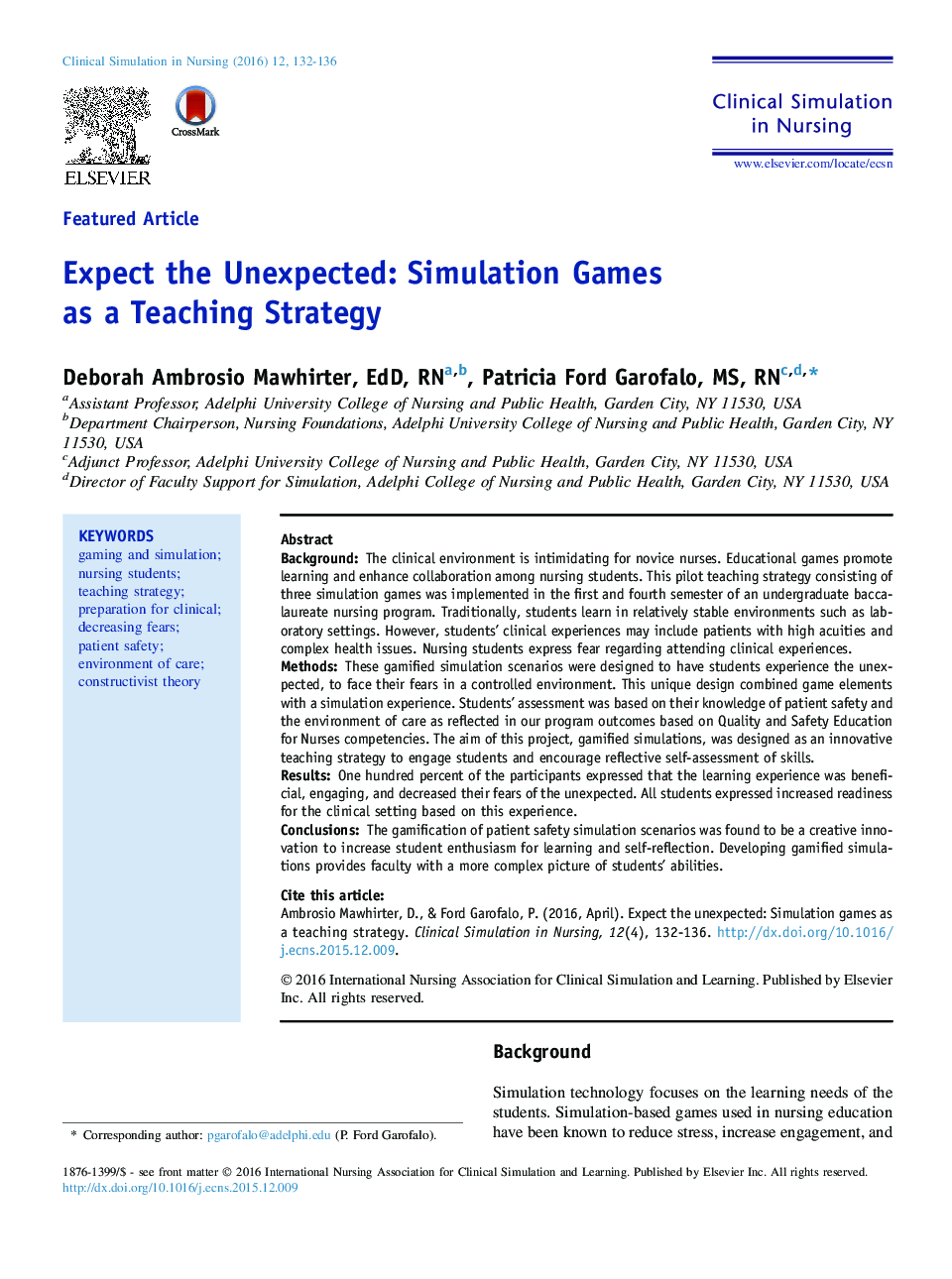| Article ID | Journal | Published Year | Pages | File Type |
|---|---|---|---|---|
| 2646922 | Clinical Simulation in Nursing | 2016 | 5 Pages |
BackgroundThe clinical environment is intimidating for novice nurses. Educational games promote learning and enhance collaboration among nursing students. This pilot teaching strategy consisting of three simulation games was implemented in the first and fourth semester of an undergraduate baccalaureate nursing program. Traditionally, students learn in relatively stable environments such as laboratory settings. However, students' clinical experiences may include patients with high acuities and complex health issues. Nursing students express fear regarding attending clinical experiences.MethodsThese gamified simulation scenarios were designed to have students experience the unexpected, to face their fears in a controlled environment. This unique design combined game elements with a simulation experience. Students' assessment was based on their knowledge of patient safety and the environment of care as reflected in our program outcomes based on Quality and Safety Education for Nurses competencies. The aim of this project, gamified simulations, was designed as an innovative teaching strategy to engage students and encourage reflective self-assessment of skills.ResultsOne hundred percent of the participants expressed that the learning experience was beneficial, engaging, and decreased their fears of the unexpected. All students expressed increased readiness for the clinical setting based on this experience.ConclusionsThe gamification of patient safety simulation scenarios was found to be a creative innovation to increase student enthusiasm for learning and self-reflection. Developing gamified simulations provides faculty with a more complex picture of students' abilities.
